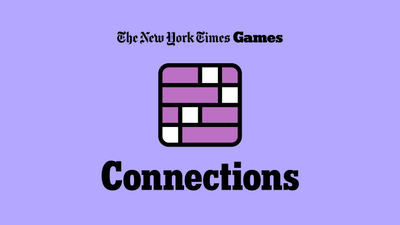Beyond the Crossword: A Guide to the Delightfully Devious Conne
-
In the world of daily puzzles, a new contender has captured the attention of word enthusiasts and casual gamers alike. If you find joy in the "aha!" moment of a well-solved crossword or the satisfying click of a Sudoku puzzle, there's a good chance you'll love the Connections Game. It’s a game that, on the surface, seems simple: group 16 words into four sets of four. But beneath this straightforward premise lies a web of clever wordplay, cunning categories, and delightful deception that will challenge your thinking and keep you coming back for more.
This guide will walk you through everything you need to know to dive into this engaging puzzle, from the basic rules to the strategies that can help you conquer the daily grid.
The Core Concept: What is the Connections Game?
Imagine you're presented with a grid of 16 words. Your task is to identify four groups of four words that share a common thread or "connection." These connections aren't always straightforward. While one category might be as simple as "Types of Fish" (e.g., SALMON, TUNA, TROUT, COD), another might be "Words That Follow 'Fire'" (e.g., DRILL, ALARM, FLY, ANT).
The game is a test of your ability to think laterally. It pushes you to look beyond the obvious definitions of words and consider their alternative meanings, their relationships to pop culture, and the subtle ways they can be linked.
How to Play: The Rules of Engagement
When you first open the puzzle, you're greeted by the 16-word grid. The gameplay mechanics are simple:
- Select Four Words: Tap or click on four words that you believe belong to a single category.
- Submit Your Guess: Once you have your four words selected, hit the "Submit" button.
- Receive Feedback:
- If you've correctly identified a group, the four words will snap together, change color, and the category they belong to will be revealed.
- If your guess is incorrect, the words will simply shake, and you'll lose one of your four allowed mistakes. The game ends if you make four mistakes.
The goal is to identify all four categories before you run out of attempts.
The Color-Coded Difficulty
One of the most elegant features of the game is its color-coded difficulty system. Each of the four categories is assigned a color that indicates its general difficulty:
- Yellow: The most straightforward category. These are usually the first ones players identify. The connections are direct and the words are commonly associated. (e.g., SHADES OF RED: scarlet, crimson, ruby, cherry).
- Green: A step up from yellow. These categories might involve less common associations or require a bit more thought. (e.g., PARTS OF A GUITAR: neck, body, bridge, fretboard).
- Blue: Now it gets tricky. Blue categories often involve homophones, words with double meanings, or more abstract connections. This is where the game’s cleverness really shines. (e.g., THINGS WITH “WINGS”: hospital, shoe, airplane, building).
- Purple: The most difficult and often the most rewarding category. Purple connections are typically based on puns, wordplay, or obscure knowledge that requires a real leap of logic. (e.g., STARTING WITH ANIMAL SOUNDS: moo-d, baa-loney, quack-mire, hiss-tory).
The beauty of this system is that it adds a layer of meta-strategy. Sometimes, identifying the easier yellow or green groups first is the best path, as it reduces the number of words on the board and makes the trickier connections easier to spot.
Tips and Strategies for Success
Venturing into the Connections Game can be daunting at first, but with the right approach, you can sharpen your skills and improve your success rate. Here are a few tips to keep in mind:
- Don't Rush the Obvious: See four animals? Don't submit them immediately. The puzzle designers are masters of misdirection. There might be five or six words that fit a seemingly obvious category. This is a classic "red herring." Take a moment to see if there's another, more specific connection that only four of them share. For example, if you see LION, TIGER, BEAR, and WOLF, the category might not be "Mammals" but "Featured in 'The Wizard of Oz'."
- Look for Overlaps: The key to solving the trickiest puzzles is identifying words that could belong to multiple potential categories. If the word "Buck" is on the board, is it referring to a male deer, a dollar, or something you do on a horse? Finding these pivot words can help you untangle the more complex blue and purple groups.
- Shuffle the Board: Feeling stuck? Use the shuffle button! Sometimes, just seeing the words in a different arrangement can break your mental fixation on incorrect groupings and help you see new possibilities you hadn't considered.
- Work Backwards from a Pair: If you're confident that two words are connected but can't find the other two, set them aside mentally and scan the remaining words. Ask yourself: "What is the specific link between these two, and what other words fit that precise pattern?"
- Embrace the Mistakes: Don't be afraid to make a guess. You have four lives for a reason. Sometimes, a failed attempt provides valuable information. If three of your four words were correct, you now know that the fourth word was the outlier and you're much closer to solving the group.
The Final Word
The Connections Game is more than just a time-killer; it's a mental workout that celebrates the richness and flexibility of language. It encourages a playful curiosity and a different way of thinking. The frustration of a near-miss is quickly replaced by the sheer satisfaction of uncovering a clever purple category.
So, next time you have a few minutes to spare, give the grid a try. You might just find your new favorite daily puzzle. Happy connecting!





